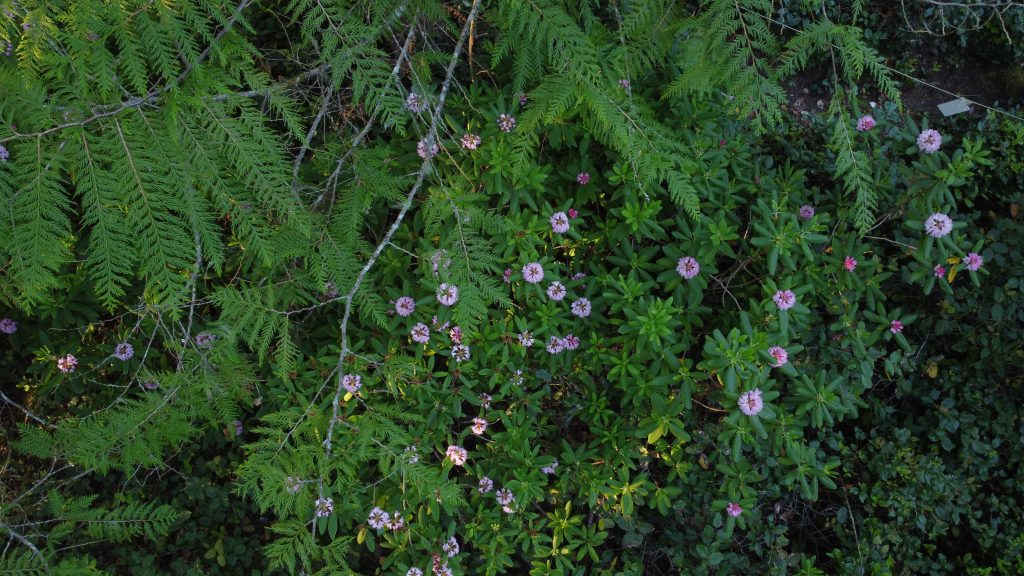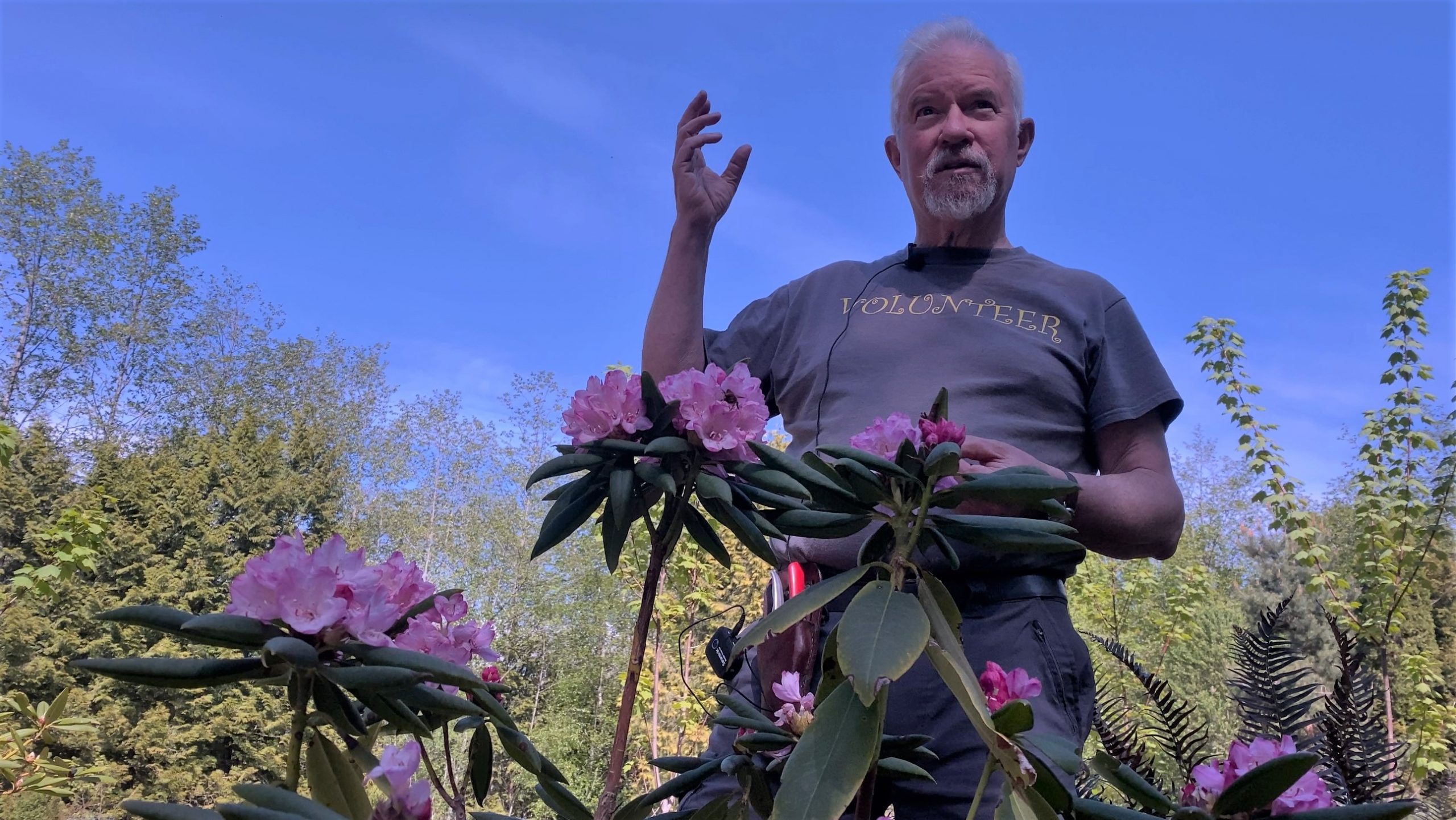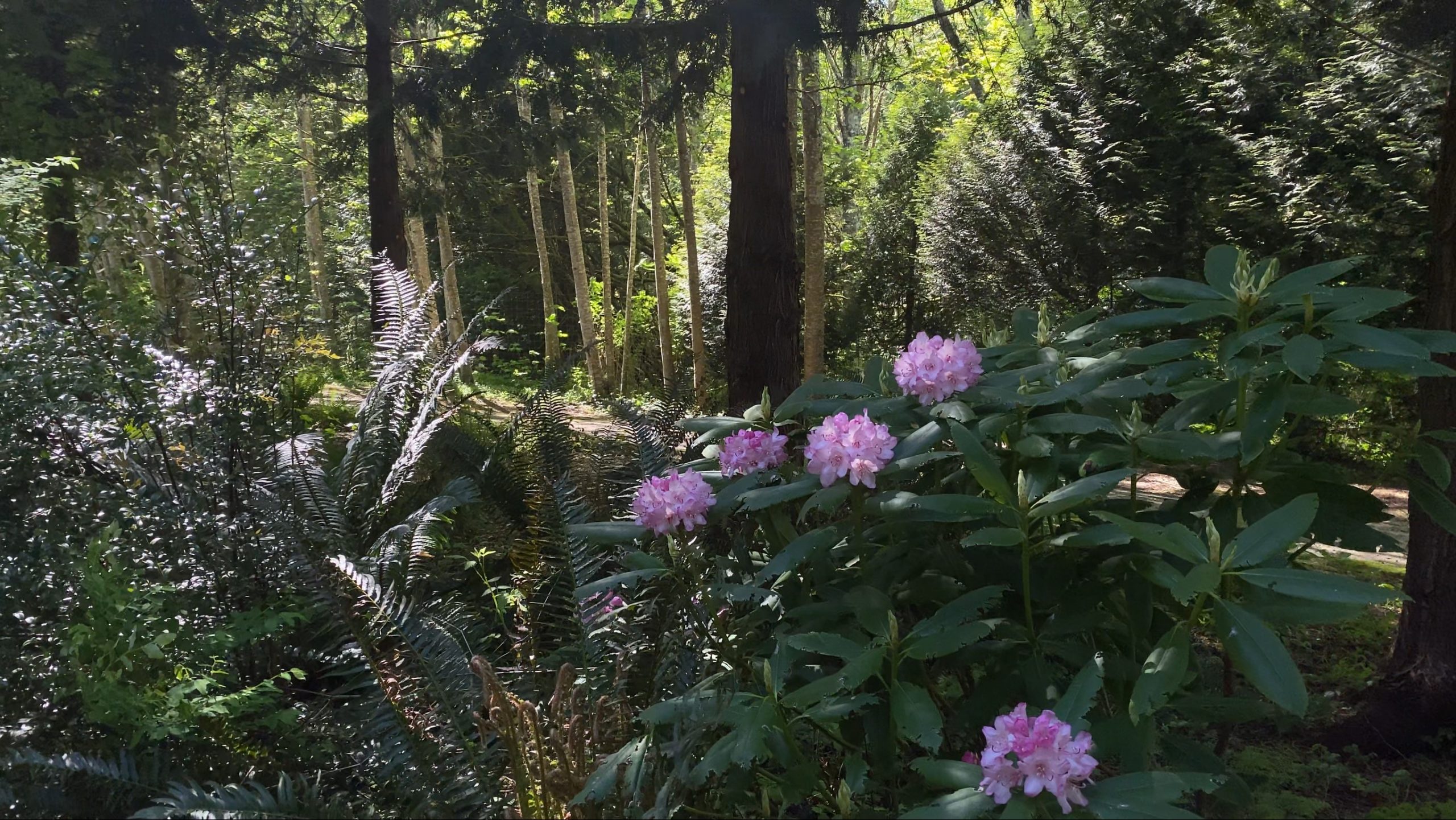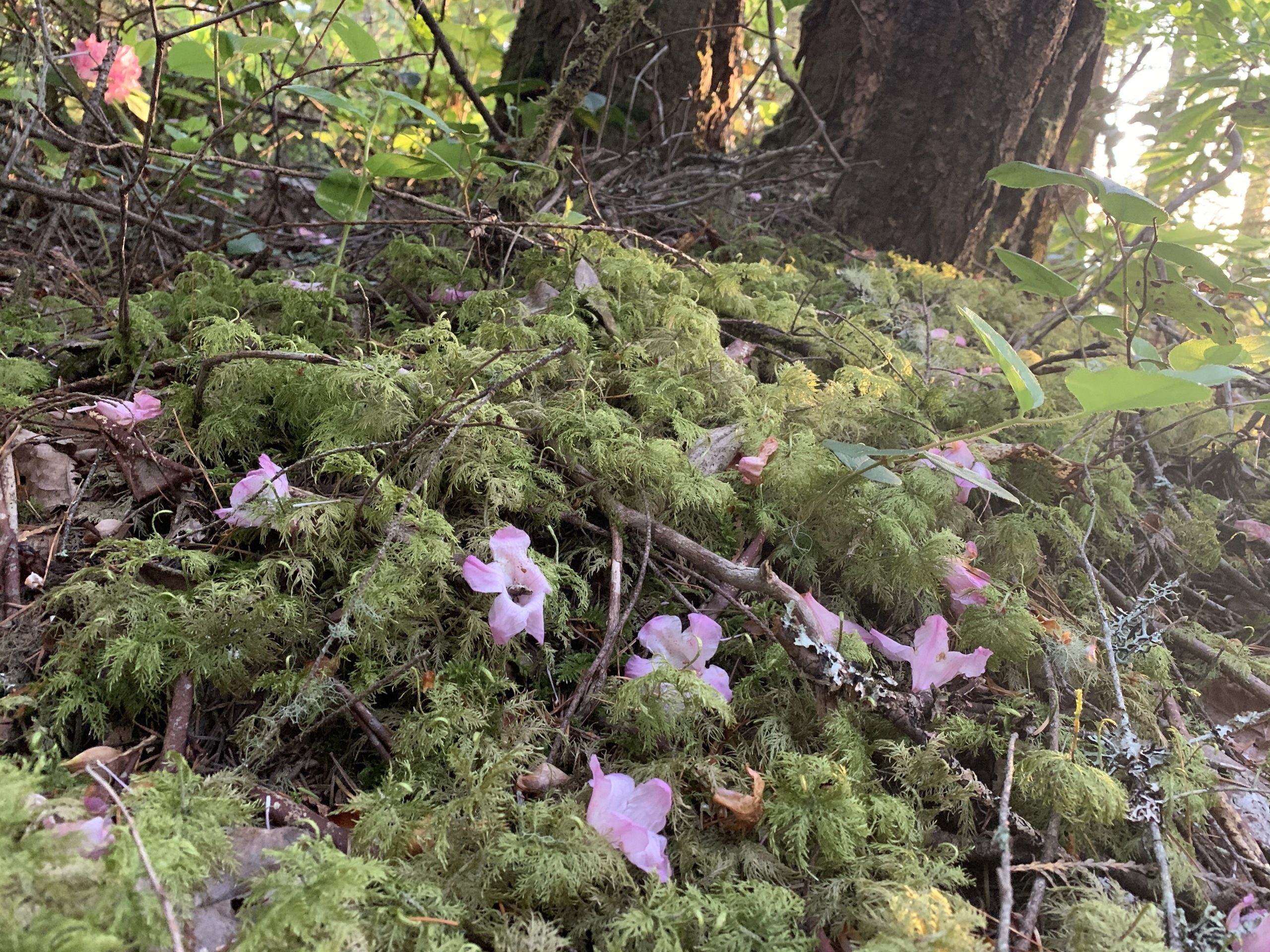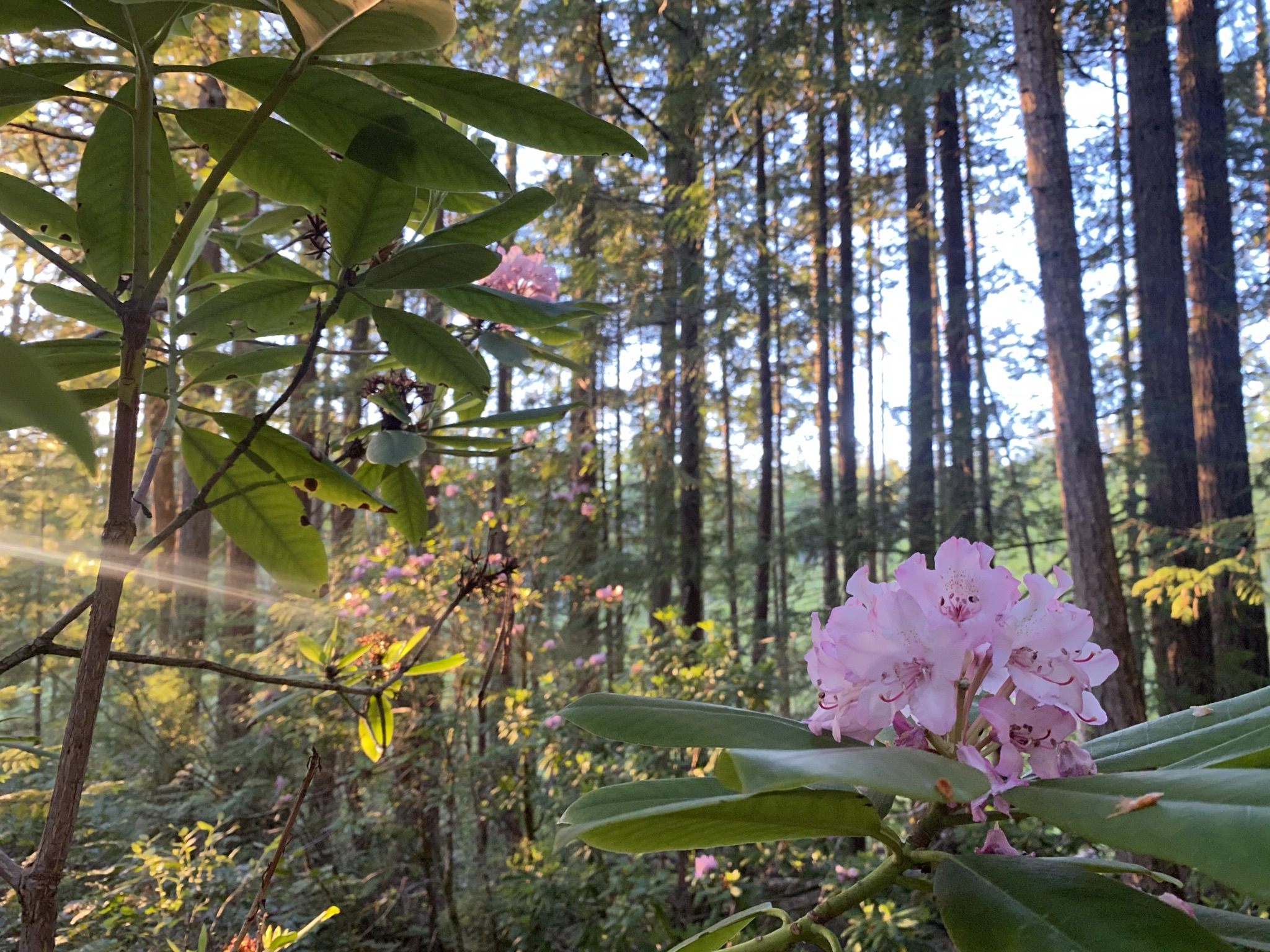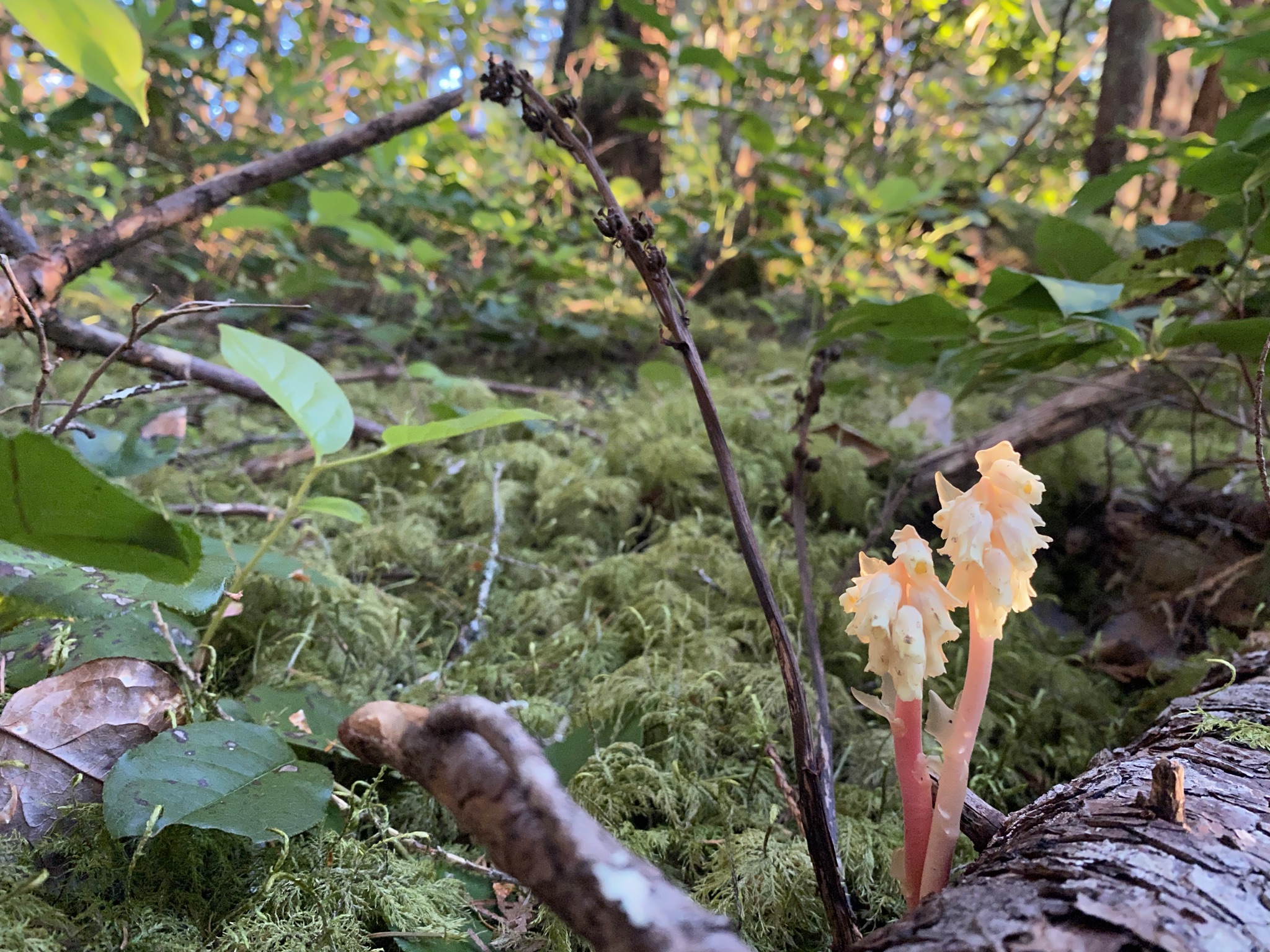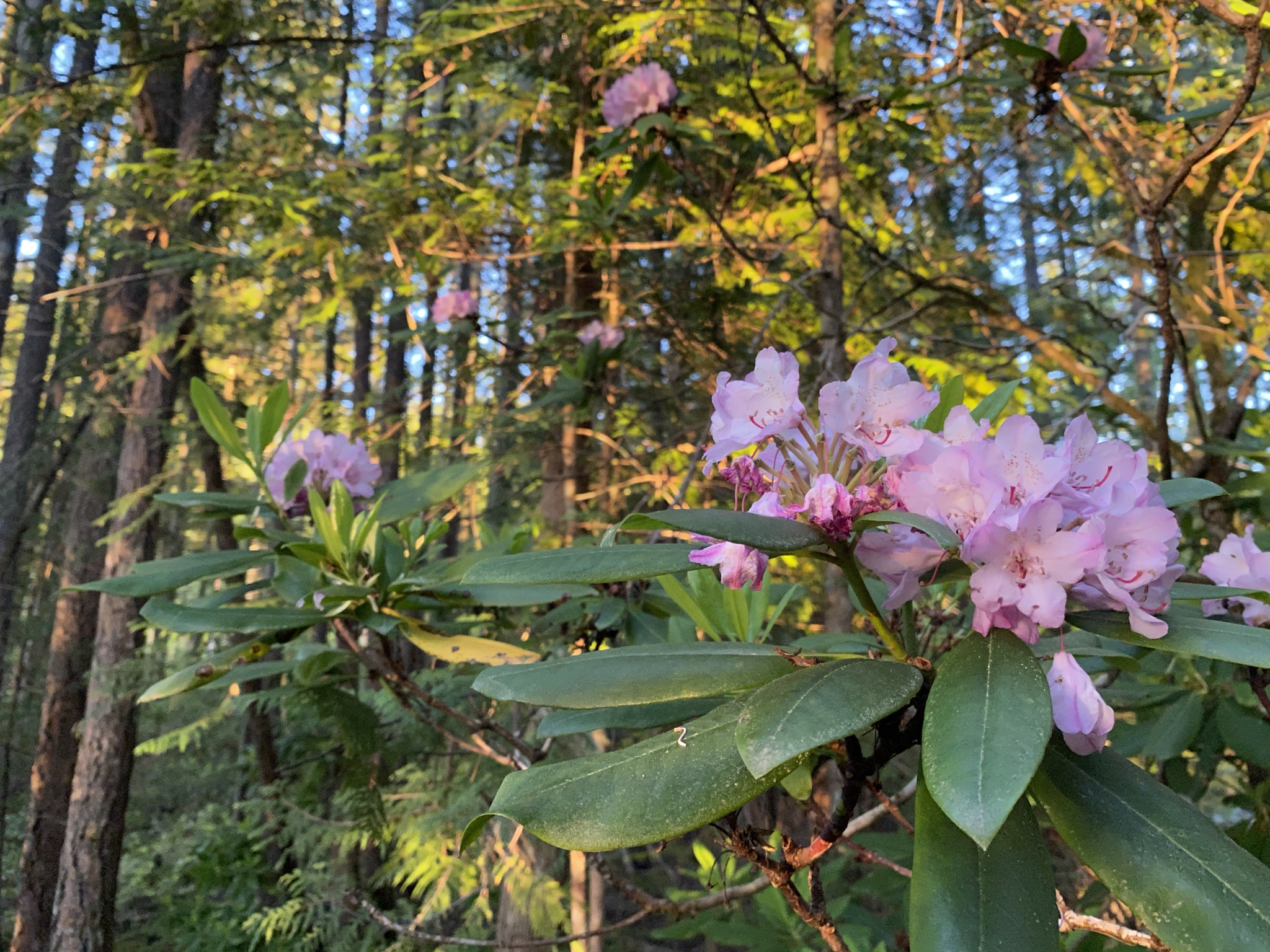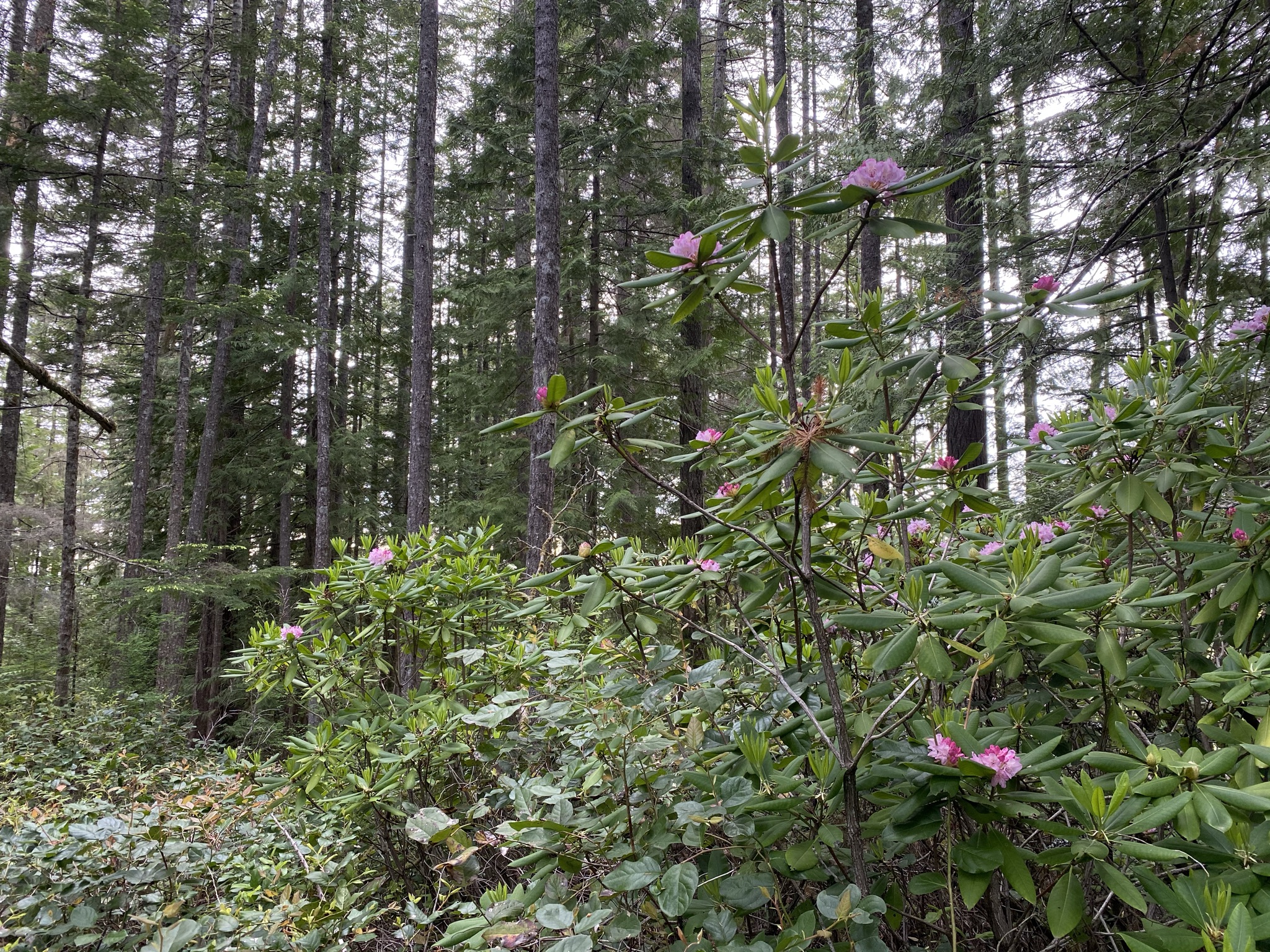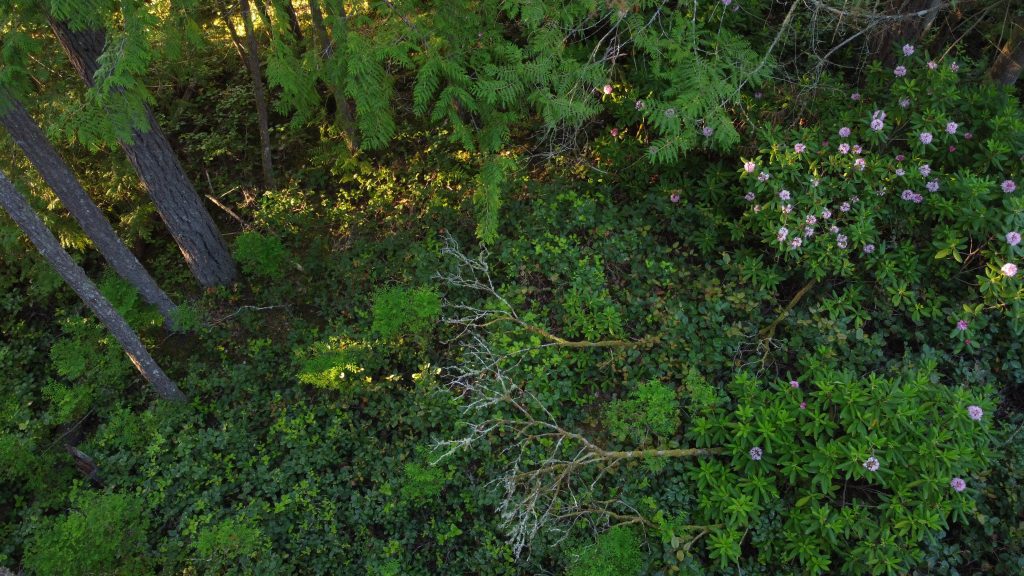
xwesam (Roberts Creek, Sunshine Coast, BC) – Twelve years ago in late summer, Harry Hill harvested seed pods from the wild Pacific rhododendron colony in shíshálh Nation territory on the lower slopes of Mount Elphinstone.
The pods were full of dust-like seeds that resembled tiny green moss after germination.
Hill, the Native Plants Coordinator at the Sunshine Coast Botanical Garden in West Sechelt, grew approx. twenty shrubs to blooming size from those tiny seedlings.
“They are incredibly slow-growing,” he said. “Not the easiest thing to keep going from that tiny, tiny size to blooming size.”
A reported study by geneticist Dr. Ben Hall in 2006 found the Mount Elphinstone colony was a unique genetic strain that prefers to live near salt water.
“We think of the rhododendrons here as sort of a satellite population,” says Hill, of the waist-high shrubs he propagated.
SUPPORT MY WORK ON PATREON & CONNECT WITH EXCLUSIVE ART & NEWS
“If anything was to happen to those original plants, this genotype of the rhododendron could continue from propagating these rhododendrons that we have down here in the Botanical Garden.”
The original colony was discovered by foresters logging the surrounding forest in previous decades.
Botanists were brought in and identified the pink-flowering shrubs as Pacific Rhododendron.
The Mount Elphinstone colony is thought to be the most northern documented occurrence of the species.
Pacific rhododendron is found in only a few other places in British Columbia, including Manning Park and Vancouver Island.
“How did they get up there?” pondered Hill. “Did some seeds travel up on the wings of a bird?”
A small buffer of forest was left around the colony as logging resumed.
The patch still grows there today, surrounded by logging roads and clearcut plantations which are slowly regrowing.
Invasive species spreading along adjacent roads and clearcuts, include Scotch broom and Himalayan blackberry, could pose a long-term challenge for the colony without intervention.
Other plants spotted in the small grove of red cedar, Douglas fir, and hemlock, include salal, Oregon grape and the delightful flowering parasitic plant, pinesap (monotropa hypopitys).
Pinesap takes its nutrients by tapping into surrounding mycelium networks, instead of through photosynthesis.
